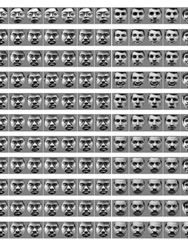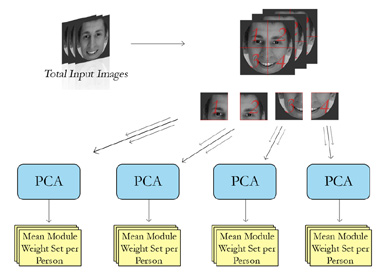Face Recognition
Face Recognition
Pose and Lighting Invariant Real-Time Face Recognition
This research develops an efficient face recognition algorithm based on a modular PCA approach that has an improved recognition rate for large variations in pose, lighting direction and facial expression. In this technique, the face images are divided into smaller sub-images, and the PCA approach is applied to each of these sub-images. The training phase of the technique begins by extracting the eigenvectors corresponding to the largest eigenvalues of a covariance matrix, which is constructed from the training image database. These eigenvectors are used for creating a generalized face feature vector, which can classify the incoming face images successfully. Experimental results demonstrate that the modular PCA method has higher recognition rate when compared with the traditional PCA method for tests conducted on UMIST and Yale databases.
- The face recognition system functions by receiving a real-time video stream from a standard surveillance camera and detecting all faces in the image region. These face images are then analyzed and compared with features stored in a database to determine identity.
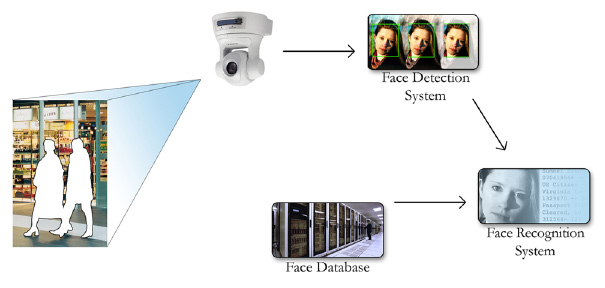
Overall system view of a face recognition system
- In order to recognize faces in real-time, the system is trained beforehand using a database of known faces. The training images are input into a Modular PCA training algorithm which calculates generalized feature vectors for each known person.
|
Face Training Database |
Modular PCA Training Block Diagram |
- After successfully training the system, the real-time recognition process can begin. Video is input to the system and broken into modules just as in the training process. Each module is assigned a weighting value according to the variance of the module. The larger the variance, the greater the weight value. This allows the system to focus on regions with greater detail.
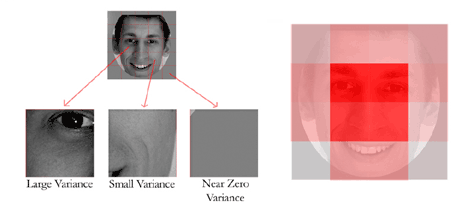
Module Weighting Process
- The system then uses the calculated features of the input image to compare with features from the trained database to determine the identity of the input face image.
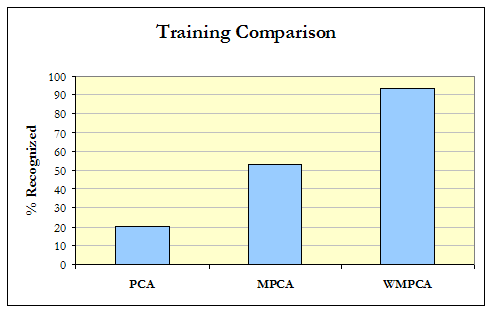
Comparison of Face Recognition Methods
Expression Recognition
Manifold Learning for Object/Face Recognition
Objective
The aim of this research is to recognize objects/faces irrespective of the pose and orientation. To recognize an object, it is sufficient to identify the manifold to which an object belongs. Our method focuses on modeling the manifolds effectively. For example, faces of the same person lie on the same manifold irrespective of the pose variations.

Manifold Learning
When datapoints are represented in a higher dimensional space, it is observed that objects of the same category tend to lie relatively close to each other, which results in a geometric structure in a higher dimensional space. This geometric structure is called a manifold.

As there exists a manifold corresponding to every object/face, to recognize an object/face it is sufficient to identify the manifold to which the object/face belongs. Our algorithm aims at modeling the manifold to deal with the general object and the face recognition problems.
Application
Object/face recognition is a challenging problem in computer vision. Some factors that make it a difficult problem are
- View point
- Illumination
- Occlusion
- Translation & rotation
Popular methods in object recognition are Scale Invariant Feature Transform (SIFT), Speeded Up Robust Features (SURF). Popular methods in face recognition are PCA, MPCA, LDA, etc. We propose a novel approach for modeling the manifolds and using them for recognition.

Proposed Method
We propose a robust mathematical model for representing complex manifolds formed by face/object images and a method to map test images to these manifolds.
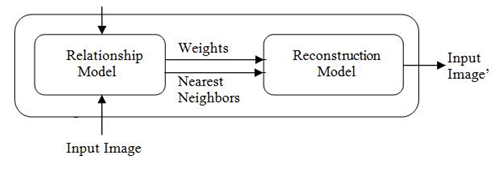
Training Phase
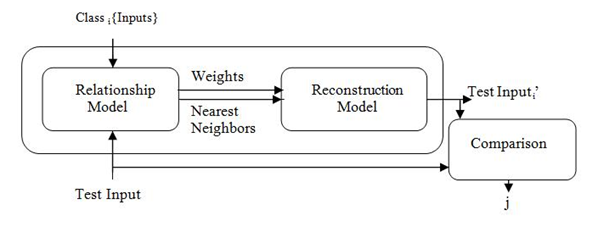
Testing Phase
Results
The method was tested and evaluated for face recognition. The results show that the proposed method is superior to other state of the art methods.


